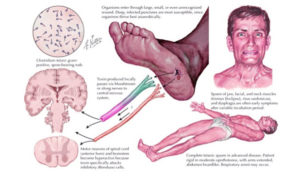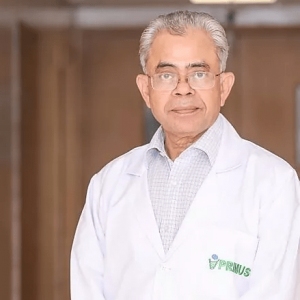Tetanus
What is Tetanus? Tetanus is a severe, life-threatening bacterial infection caused by the spores of a bacterium, ‘Clostridium tetani’, which infiltrates the body through wounds, deep cuts, burns, etc., depositing toxins that affect the nervous system. It leads to muscle stiffness and chronic painful contractions in the neck and jaw muscles. Also called ‘lockjaw’, it […] Read More
Top Doctors For Tetanus Treatments
Top Hospitals For Tetanus Treatments
Tetanus
- Localized tetanus
- Generalized tetanus
- Neonatal tetanusz
- Cephalic tetanus.[1]

- Wounds from surgical operations, if not taken care of properly.
- Gunshot wounds
- Wounds from punctures like piercings, tattoos, splinters, etc.
- Deep cut injuries from knives, razors, glasses, ceramics, etc.
- Injuries from injections.
- Crush injuries
- Burns
- Animal bites.
- Severe fractures, where the bone is left exposed
- Foot ulcers.
- Ear infections
- Septic abortions
- Dental procedures
- Circumcision
- The infected umbilical stump of a newborn baby(neonatal tetanus) if the mother was not immunized against tetanus during pregnancy.
- Lack of taking vaccination doses against tetanus.
- Lack of booster shots every ten years.
- Wounds and burns that are not treated well enough.
- Presence of a foreign object such as a nail, a splinter of glass, etc. in an injury
- Diabetic patients who have ulcers and left untreated.
- Fractured bones, especially the spine.
- Laryngospasm (involuntary tightening of vocal cord)
- Muscular tears
- Respiratory difficulties or failure
- Pneumonia
- Decreased heart function.
- Low blood pressure
- Lung artery blockage with blood clots (pulmonary embolism)
- Brain damage
- Death
Prevention of Tetanus
Prevention of Tetanus is through the following ways:- Immunization/ Vaccination
- Two months
- Four months
- Six months
- 12 to 23 months
- 4 to 6 years
- 9 to 15 years
- Proper wound care.
- Tetanus Immunoglobulin (TIG)
- Antibiotics
- Medications to stop muscle stiffness and pains.
- Surgery
- Ventilators
- High-Calorie Intake
Symptoms
After being infected by the spores of the bacterium, they take 7-10 days to incubate before symptoms begin to show. On incubation, the bacteria begin to interfere with the nerve signals and you’ll begin to experience severe spasm and stiffness in various muscles especially the facial and the upper body muscles. The contractions start from the jaw, neck, throat, and continue to extend to the chest, spine, back, and abdomen.
Some of the symptoms that are associated with this disease include:
- Difficulty in breathing
- Swallowing difficulty/sore throat
- Severe pains in the affected muscles
- Faster heart rate
- Headaches
- Fever
- Sweating
- High blood pressure
- Diaspora, etc.
Causes
Tetanus is caused by a bacterium called ‘Clostridium tetani’ which lays domicile in areas unknown but common to us; the soil, dust, saliva, manure, animals’ intestines, and feces, etc. The bacterium is anaerobic, that is, it thrives better in the absence of oxygen, producing more spores that can remain infectious for more than 40 years.
The spores produced by the bacterium infiltrates your body through deep cuts, wounds, burns, and begin to release the tetanus toxin called ‘tetanospasmin’. Once these neurotoxins are released into the bloodstream, they interfere with and block out the nerve signals between the brain and the spinal cord, and from your spine to your muscles. The nerve signal blocks cause severe stiffness and contractions to your muscles, oftentimes leading to muscle tissue injury.
FAQ
- How long does it take to recover from tetanus?
Muscle spasms may last for about 3 to 5 weeks with adequate treatment and slowly get better. Total recovery can take months.
- How is tetanus diagnosed?
There is no lab test for tetanus. Diagnosis is based on your symptoms, your history of any wound, physical examination, and vaccination history
- Can you get tetanus from a shallow cut?
Yes, there is a possibility that we can get infected through any cut or wound, as far as they come in contact with the tetanus bacteria.
- If I cut myself, should I get a tetanus shot?
If you have a fear of getting infected from any cut especially when your immunization is not up to date, getting a tetanus immunoglobulin and a tetanus vaccine should be your option to prevent further infection.
- Why does rust cause tetanus?
Rust is formed and found on metals and is rich in organic materials like manure and soil, chances of growth of Clostridium tetani are high in this region. They can be inhibitors of tetanus bacteria. It is not mandatory that tetanus is caused only by rust materials, it is one of the causes for tetanus.























































